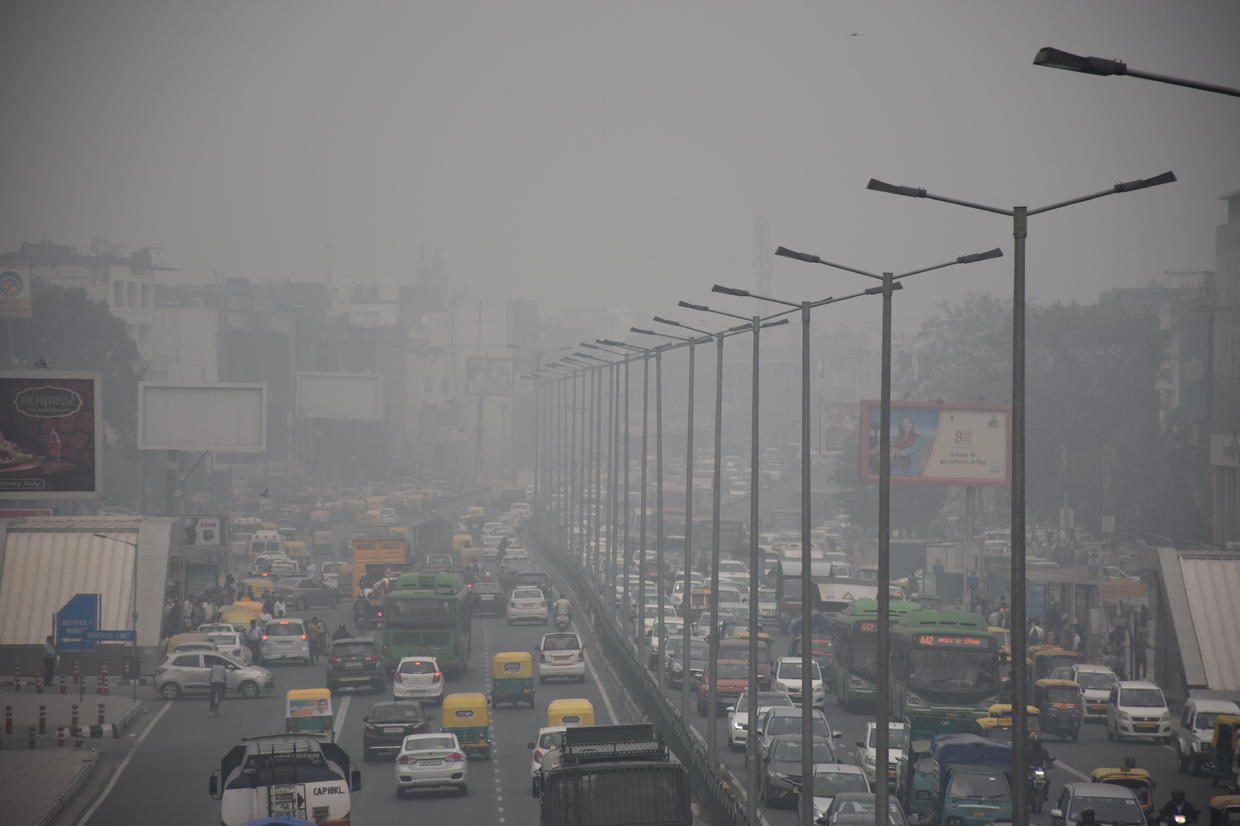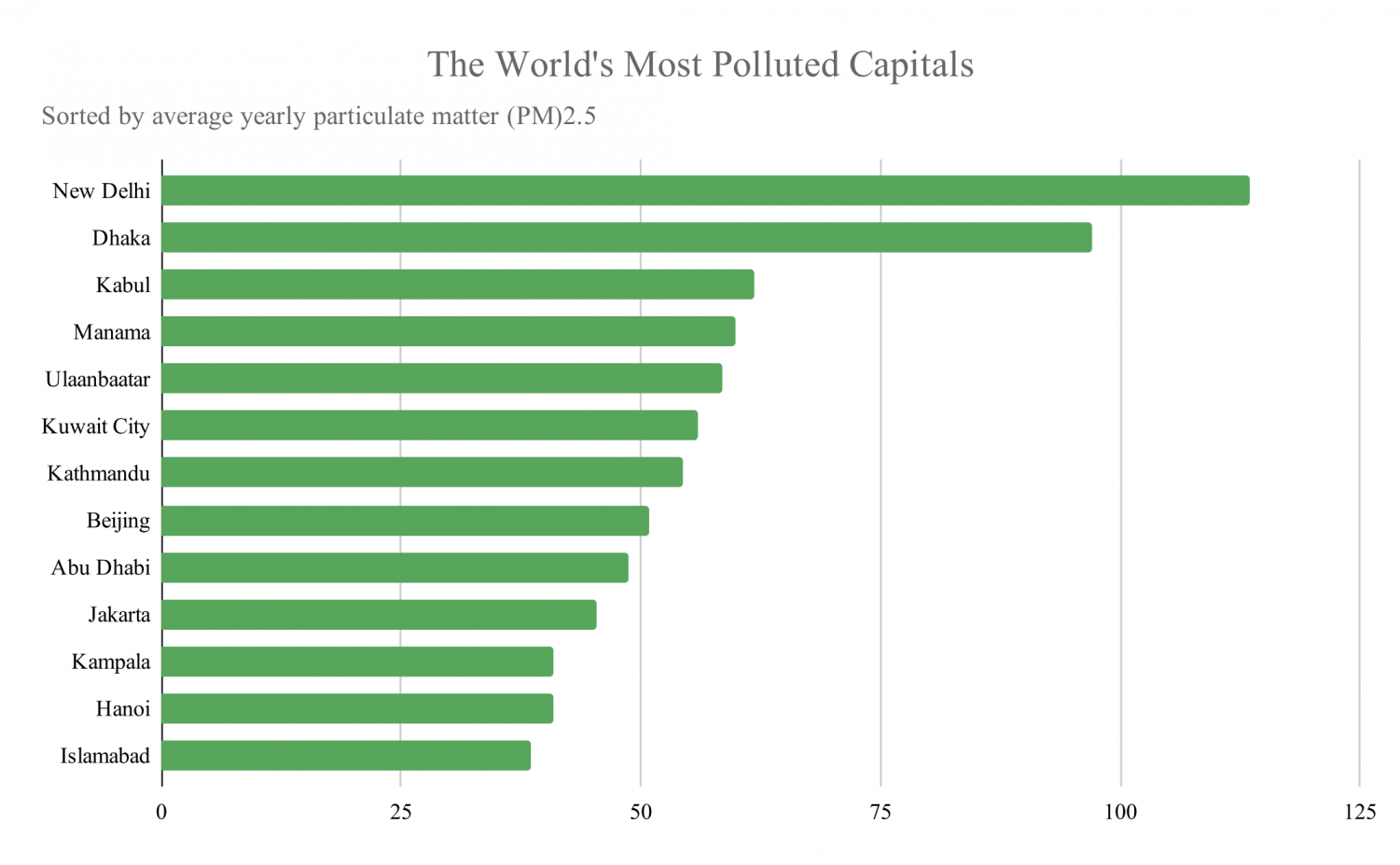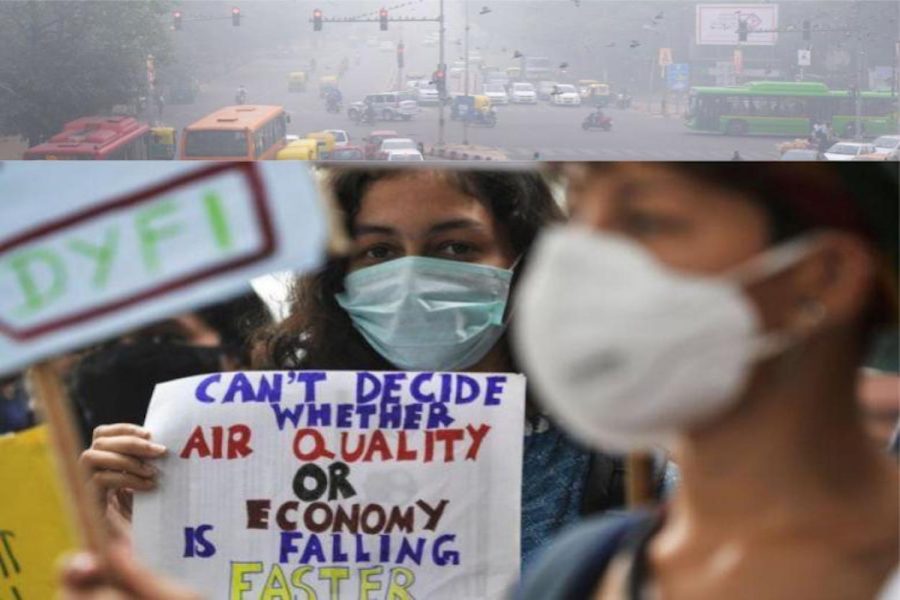India’s poor air quality threatens public safety
New Delhi’s poor air quality poses dangerous living conditions for its citizens.
After weeks of polluted New Delhi skies, the Indian government declared a public health emergency November 1. Not only is the pollution causing respiratory concerns among citizens, but it is also contributing to climate change and Earth’s changing temperatures. Sacred Heart Greenwich senior Grace McDevitt, the head of the Environmental Action Club, hopes to bring awareness to the issue of air pollution and its effects on the climate.
Every winter, farmers in northern India burn crop stubble to prepare for the next harvest. Naturally, the fumes from these fires move toward New Delhi and its suburbs, according to The New York Times. When they collide with construction dust, vehicle emissions, and residual smoke from annual firework displays from Diwali, October 27, the resulting smog becomes hazardous to New Delhi residents.

The mixture of pollutants in the air consists of particulate matter, carbon dioxide, nitrogen dioxide, and sulfur dioxide, according to bbc.com. This combination can contribute to climate change and fluctuating temperatures on Earth. Increased emissions of carbon dioxide, which can come from transportation, electricity production, industrial practices, and agriculture, add to the atmospheric effects of air pollution, according to cleanerandgreener.org.
A safe air quality index (AQI) is near 50. Any number over 100 is unhealthy and an AQI over 300 is dangerous for anyone breathing the air. India’s Central Pollution Control Board declared a public health emergency for New Delhi and its surrounding suburbs as the city’s AQI remained over 700 November 1, according to cbsnews.com.
New Delhi’s particulate matter (PM)2.5 level, also known as the level of dangerous particles in the air, is much higher than normal, according to bbc.com. The World Health Organization says a safe level of PM2.5 is 60 milligrams per cubic meter, according to cbsnews.com. The PM2.5 level in New Delhi rested at 500 milligrams for several days.
As a result, New Delhi hospitals have seen a spike in patients reporting respiratory problems. In 2017, Dr. Randeep Guleria, Indian pulmonologist and the head of the Department of Pulmonology and Sleep Disorders at the All India Institute of Medical Sciences, pointed to air pollution as the cause of these issues.
“We have been looking at it and it is a cause of concern,” Dr. Guleria said, according to indianexpress.com. “Pollution levels in [New] Delhi have continued to be high for a long time. It is a silent killer.”
A recent study estimates that air pollution kills over one million Indians per year, according to washingtonpost.com. In the past, New Delhi has had high air pollution, causing an increase in respiratory disease among the city’s 19 million citizens, according to cbsnews.com.
Air pollution from diesel engines circulates around the globe, eventually reaching remote places including the polar regions, according to unenvironment.org. When the polluted particles land on ice and snow, they darken the surfaces slightly, reflecting less sunlight into space. Slowly, this contributes to global warming and rising Earth temperatures.

As the leader of the Environmental Action Club, Grace feels passionate about taking action against and spreading awareness about pollution and climate change. Although people may not be able to directly impact the pollution in India, Grace offered suggestions as to how people can help alleviate it and the changing climate.
“I think this issue can often be out of sight and out of mind for people that are not living in areas heavily affected by air pollution, but it is vital to make sure people understand what they can do to help,” Grace said. “This can include trying to carpool more often, conserving energy in the home by turning off lights and other appliances, and staying educated about legislation regarding emission reductions and clean energy.”
When the Indian government considers the pollution too severe, an emergency action plan goes into effect. Under these regulations, trucks cannot enter the city, citizens may not use diesel generators, and officials shut down certain types of polluting industries, according to washingtonpost.com.
Additionally, the New Delhi government distributes pollution masks to students and temporarily limits the number of cars running each day by allowing vehicles with even-numbered license plates to only drive on even-numbered days.
Grace feels particularly compelled to help those in New Delhi due to her familiarity with and connections to people living in areas with low air quality.

“The first time I was exposed to the issue was by speaking with a friend who grew up in Beijing. She shared that most days she would have to wear a mask if she planned to be outside for more than 15 minutes,” Grace said. “Upon hearing her stories, I was especially upset by the fact that so many people are unable to enjoy the outdoors in highly polluted cities in addition to the consequences of poor air quality on public health and climate change.”
During the day, Indian government teams search the city for garbage burning, plastic dumping, projects that generate road dust, and illegal encroachments on roads that can cause traffic issues, according to washingtonpost.com. New Delhi permits the officials who patrol the streets day and night searching for these behaviors to fine violators.
Although these precautions are a step toward improving the air quality in New Delhi, Grace believes that people must also understand the underlying social, political, and cultural issues of India’s air pollution.
“This summer, I attended a program with Sea Education Association in Woods Hole, Massachusetts and took a course on marine policy, society, and culture. One of the most valuable lessons I took away from the course was that of cultural imperialism,” Grace said. “Such a huge part of environmental science and policy is trying to understand different ideas and lifestyles in order to cultivate practical solutions. Therefore, regarding air pollution in India, I think it is vital to understand the social, political, and cultural implications of the issue and the possible solutions.”
Featured Image by Sydney Gallop ’20

Sydney is thrilled to return to the King Street Chronicle for the 2019-2020 school year as Co-Editor-in-Chief. Moving forward from her previous position...











